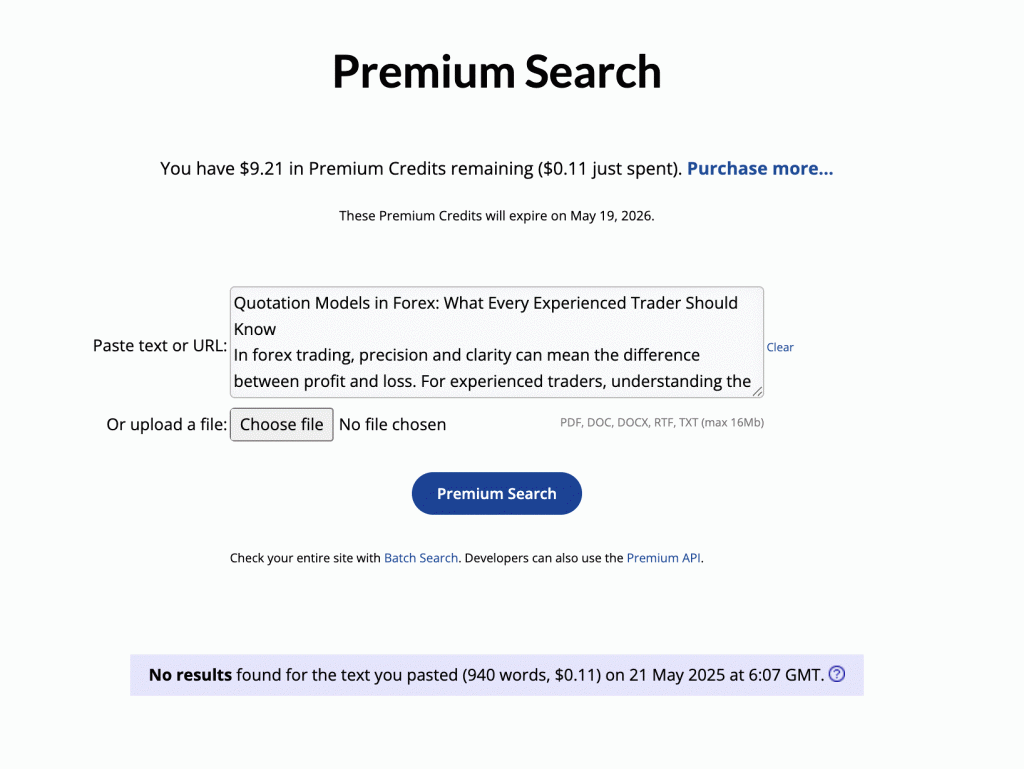Quotation Models in Forex: What Every Experienced Trader Should Know
In forex trading, precision and clarity can mean the difference between profit and loss. For experienced traders, understanding the nuances of quotation models isn’t just useful—it’s essential.
Quotation models define how currency prices are presented, influence how trades are executed, and shape strategies across global markets. Yet even seasoned professionals sometimes overlook these fundamentals, especially when working across different platforms or currency regions.
Understanding Forex Quotations
Forex trading revolves around currency pairs, where one currency is quoted relative to another. Each quote you see on your trading platform tells a story: how much of one currency you need to buy one unit of another.
Currency Pairs Explained
Every forex quote involves two currencies:
- Base currency: The first currency in the pair.
- Quote currency: The second currency in the pair.
Bid and Ask Prices
When trading forex, you’re shown two prices:
- Bid price: The price you can sell the base currency.
- Ask price: The price you can buy the base currency.
The difference between them is known as the spread. For experienced traders, tight spreads are crucial, especially in high-volume strategies like scalping or intraday trading.
Pips and Pipettes
A pip (percentage in point) is the standard unit of measurement for currency movement, typically the fourth decimal place (0.0001) for most pairs. Some brokers also display pipettes, which are one-tenth of a pip (0.00001), allowing for more granular pricing and execution.
Direct Quoting
One of the most important quotation models to understand is direct quoting. In simple terms, it shows how much of the domestic currency is needed to buy one unit of a foreign currency.
A direct quote prices foreign currency in terms of domestic currency. For example, if you are in the U.S., a quote like USD/JPY = 145.00 means that 1 U.S. dollar equals 145 Japanese yen.
This is where the key phrase direct quote meaning becomes highly relevant. Traders should know that a direct quote always keeps the foreign currency as the fixed unit, while the domestic currency is variable.
Examples of Direct Quotes
Let’s say you’re a trader based in the UK:
- USD/GBP = 0.78 → This is a direct quote for someone in the UK.
- It means 1 USD = 0.78 GBP.
If you’re in Japan, USD/JPY = 145.00 is a direct quote, because it prices a unit of foreign currency (USD) in terms of your domestic currency (JPY).
Advantages of Direct Quoting
- Simplicity: Easier to interpret when managing a domestic portfolio.
- Price transparency: Helps traders track currency appreciation or depreciation in local terms.
- Comparison-friendly: Useful when evaluating how a foreign currency performs relative to the local economy.
Strategic Implications
Understanding direct quoting is especially important when:
- Entering trades based on domestic economic news.
- Converting cross rates.
- Calculating realized profits in your home currency.
A failure to grasp the direct quote meaning can lead to confusion during analysis or misinterpretation of gains and losses.
Indirect Quoting
In contrast, indirect quoting prices the domestic currency in terms of foreign currency. This flips the perspective and is more commonly seen on global platforms.
If you’re in the U.S., a quote like EUR/USD = 1.1200 is an indirect quote. It shows how many U.S. dollars are needed to buy one euro.
Comparing Direct and Indirect Quotes
| Feature | Direct Quote | Indirect Quote |
| Perspective | Foreign currency = 1 unit | Domestic currency = 1 unit |
| Example (US trader) | USD/JPY = 145.00 | EUR/USD = 1.1200 |
| Use Case | Domestic-focused trading | Global or cross-border trading |
Cross Rates and Triangular Arbitrage
A cross rate is the exchange rate between two currencies that does not involve your domestic currency. For example, if you’re a trader in the UAE, the EUR/JPY pair would be a cross rate.
Cross rates are often derived from two primary quotes involving a third currency, typically the USD. For instance:
- EUR/USD = 1.1200
- USD/JPY = 145.00
From this, you can compute EUR/JPY as:
1.1200 × 145.00 = 162.40
Triangular Arbitrage
This is a risk-free strategy that involves exploiting discrepancies in cross rates. If EUR/USD, USD/JPY, and EUR/JPY don’t align perfectly due to latency or mispricing, traders can:
- Convert EUR to USD.
- USD to JPY.
- JPY back to EUR.
If done correctly, this yields a profit without exposure to directional risk. It’s rare but possible in high-frequency environments, making it important for algorithmic traders to understand quote mechanics.
Quotation Conventions Across Markets
Different regions use different quotation styles based on their local currency conventions:
- UK: Quotes are often GBP-based (e.g., GBP/USD).
- Japan: Commonly uses USD/JPY as a direct quote.
- Europe: EUR/USD is the standard.
Knowing your region’s default quoting style helps avoid confusion and ensures proper interpretation of price movements.
Not all brokers quote the same way. Some may offer both direct and indirect options, while others follow platform-specific norms (like MetaTrader’s default USD-centric quotes).
MT4 and MT5 may present quotes differently from proprietary platforms. Always confirm whether the platform uses base/quote or quote/base formats, especially when coding Expert Advisors (EAs) or algorithms.
Conclusion
Understanding quotation models isn’t just a textbook exercise—it’s a critical component of trading strategy, execution, and risk management. Whether you’re interpreting a direct quote, calculating a cross rate, or optimising an algorithm, the way prices are quoted can significantly shape your results.
If there’s one takeaway, it’s this: never assume quote format is universal. Learn your platform, verify your broker’s conventions, and stay sharp when working with multiple currencies.

 How to Select Best Retreat Venue on the Mountains
How to Select Best Retreat Venue on the Mountains  Clues of Getting a Plastic Molding Company
Clues of Getting a Plastic Molding Company